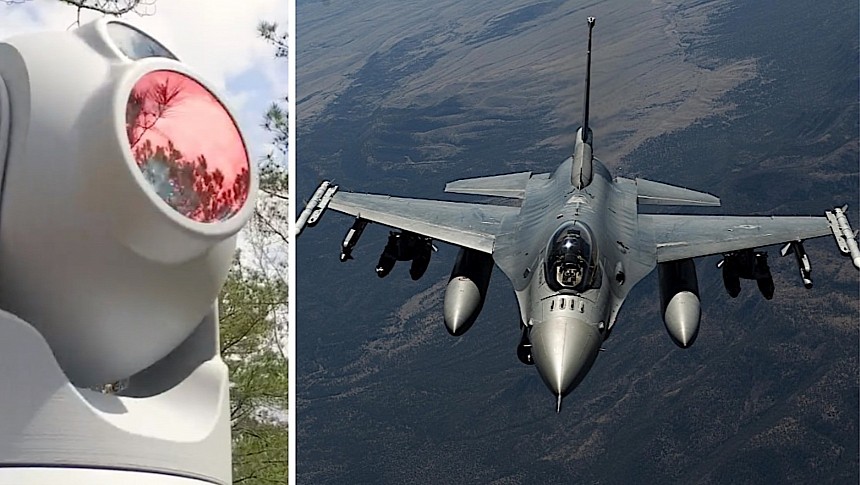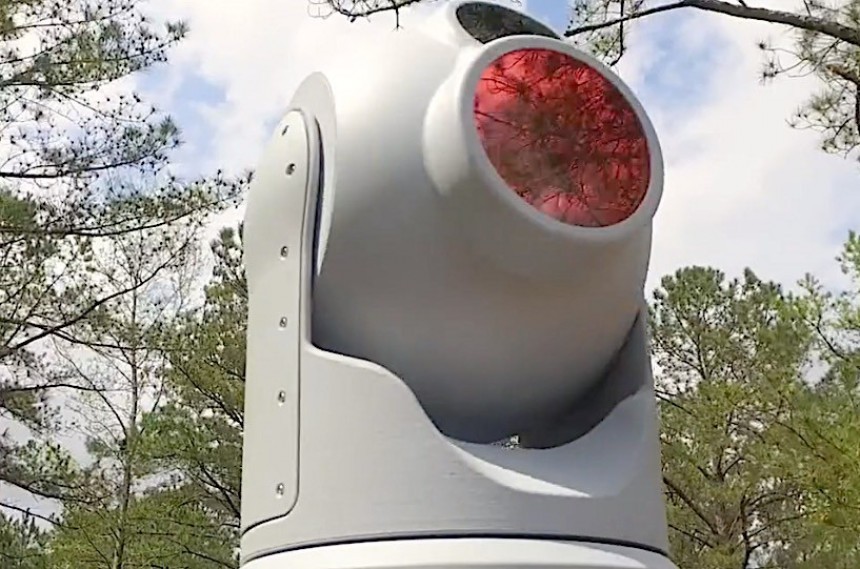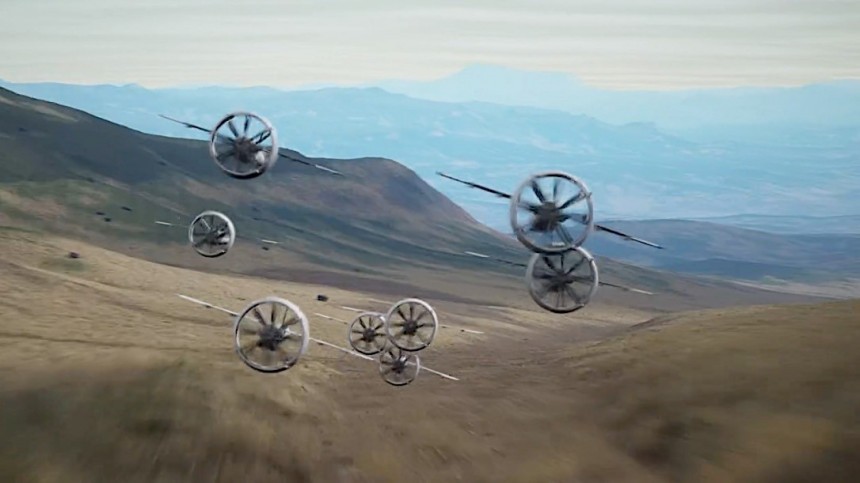Like it or not, artificial intelligence is here and it is already changing our lives. Sure, it's not yet self-aware, meaning it can't make decisions outside its core programming, but these systems have proven they can learn and, if properly built, even evolve based on those learnings.
It's true most of the time we humans have the tendency to mistake any complex algorithm for an AI. It's not these things or AIs the likes of ChatGPT we're here to discuss today, but something that's a lot more complex, and has the potential of having a more direct impact on the life of humans itself: the Hivemind AI.
That's the name a company called Shield AI uses to designate an artificial intelligence system that is being purpose-built to power "every military asset: aircraft, drones, ships, satellites and submarines." And by "power” the company means fly, navigate, and control, just like human soldiers do now.
The idea of using AI to control military hardware is not bad, as it will take humans and their weaknesses out of the equation. AI-piloted aAirplanes, for instance, will be able to fly far beyond what the physical human limits currently allow, decision-making will probably be faster, and overall efficiency at a mission level will increase.
True, that's not something that will happen tomorrow, but it will eventually happen, and we'd better be ready for it. That's why we thought a closer look at the tech could be just what's needed to get a better sense of far away from that moment we are at this time.
Before getting into it though I should mention the technical specs of the technology, because of its sensitive nature, are not public, so I won't go into that.
So, what is this AI? As said, an artificial intelligence system meant for use in military applications, more specifically as an aircraft pilot. It has been designed to work independently from human control, and unlike other systems currently on the market, it will require no communication with a ground station or controller, no GPS to find its way, and no previously-set waypoints to get where it's going and get the job done.
All of the above is possible because the system uses an aircraft's sensors to create a map of its surroundings, and navigates based on that. Once it reaches its target, the system will execute the assigned mission.
Shield AI says its solution learns and can execute autonomous missions on its own, and needs no prior knowledge to make decisions that will allow it to execute its goals. That means there is no preset behavior included in the programming, and the system adapts to whatever it needs to adapt to.
It's unclear exactly how that is supposed to work, but it would seem Shield AI is living up to its promises. The company is already in cahoots with the American defense industry, and testing the AI as the Hivemind software ecosystem as part of projects run with the American military and DARPA.
The most important such project had the AI conduct simulated dogfights against equally imagined F-16 Fighting Falcons, flown by active-duty USAF and Navy pilots. Humans got trashed by the AI in 99 percent of cases.
Shield AI plans to deploy the system at first as a pilot for a series of drones it makes, called V-BAT and Nova 2. These things can be used for going past enemy air defenses or clear rooms for foot soldiers.
Then, the AI should be made part of human-piloted fighter planes, where it will work as a sort of artificial co-pilot. Taking advantage of data fed to it by HUDs, flight controllers, sensors, and radios, it could help enhance the pilots' decision-making process.
Not only the F-16 is targeted by this development, but also the F-18 and even the F-22. It's likely though the older airplanes will take center stage, as the AI could bring entirely new capabilities to the aging military platforms.
Ultimately, entirely new aircraft could be built to be flown exclusively by this tech, effectively taking us into the era of real autonomous, machine-driven warfare. Using it to power autonomous aircraft that can team up with piloted machines is also on the table.
A recent development in this respect was the announcement that the Shield AI solution will be piloting the XQ-58A Valkyrie, a jet aircraft-like stealth drone being put together by defense contractor Kratos. The drone will become the first such aircraft to incorporate the AI pilot, at least at an official level. We say that because Shield AI states on its website that the system is "the first and only fully autonomous AI pilot deployed in combat," most likely during secret missions run by the U.S. Special Operations Command.
At the moment, the AI is in the process of learning "to execute a variety of missions from Beyond Visual Range strike to suppression of enemy air defense." We have no info when the tech will be fully mature, but there's only one of two ways the rest of us civilians can feel about it: either be excited at what the AI can do, or terrified of it.
That's the name a company called Shield AI uses to designate an artificial intelligence system that is being purpose-built to power "every military asset: aircraft, drones, ships, satellites and submarines." And by "power” the company means fly, navigate, and control, just like human soldiers do now.
The idea of using AI to control military hardware is not bad, as it will take humans and their weaknesses out of the equation. AI-piloted aAirplanes, for instance, will be able to fly far beyond what the physical human limits currently allow, decision-making will probably be faster, and overall efficiency at a mission level will increase.
True, that's not something that will happen tomorrow, but it will eventually happen, and we'd better be ready for it. That's why we thought a closer look at the tech could be just what's needed to get a better sense of far away from that moment we are at this time.
Before getting into it though I should mention the technical specs of the technology, because of its sensitive nature, are not public, so I won't go into that.
All of the above is possible because the system uses an aircraft's sensors to create a map of its surroundings, and navigates based on that. Once it reaches its target, the system will execute the assigned mission.
Shield AI says its solution learns and can execute autonomous missions on its own, and needs no prior knowledge to make decisions that will allow it to execute its goals. That means there is no preset behavior included in the programming, and the system adapts to whatever it needs to adapt to.
It's unclear exactly how that is supposed to work, but it would seem Shield AI is living up to its promises. The company is already in cahoots with the American defense industry, and testing the AI as the Hivemind software ecosystem as part of projects run with the American military and DARPA.
The most important such project had the AI conduct simulated dogfights against equally imagined F-16 Fighting Falcons, flown by active-duty USAF and Navy pilots. Humans got trashed by the AI in 99 percent of cases.
Then, the AI should be made part of human-piloted fighter planes, where it will work as a sort of artificial co-pilot. Taking advantage of data fed to it by HUDs, flight controllers, sensors, and radios, it could help enhance the pilots' decision-making process.
Not only the F-16 is targeted by this development, but also the F-18 and even the F-22. It's likely though the older airplanes will take center stage, as the AI could bring entirely new capabilities to the aging military platforms.
Ultimately, entirely new aircraft could be built to be flown exclusively by this tech, effectively taking us into the era of real autonomous, machine-driven warfare. Using it to power autonomous aircraft that can team up with piloted machines is also on the table.
A recent development in this respect was the announcement that the Shield AI solution will be piloting the XQ-58A Valkyrie, a jet aircraft-like stealth drone being put together by defense contractor Kratos. The drone will become the first such aircraft to incorporate the AI pilot, at least at an official level. We say that because Shield AI states on its website that the system is "the first and only fully autonomous AI pilot deployed in combat," most likely during secret missions run by the U.S. Special Operations Command.
At the moment, the AI is in the process of learning "to execute a variety of missions from Beyond Visual Range strike to suppression of enemy air defense." We have no info when the tech will be fully mature, but there's only one of two ways the rest of us civilians can feel about it: either be excited at what the AI can do, or terrified of it.


















